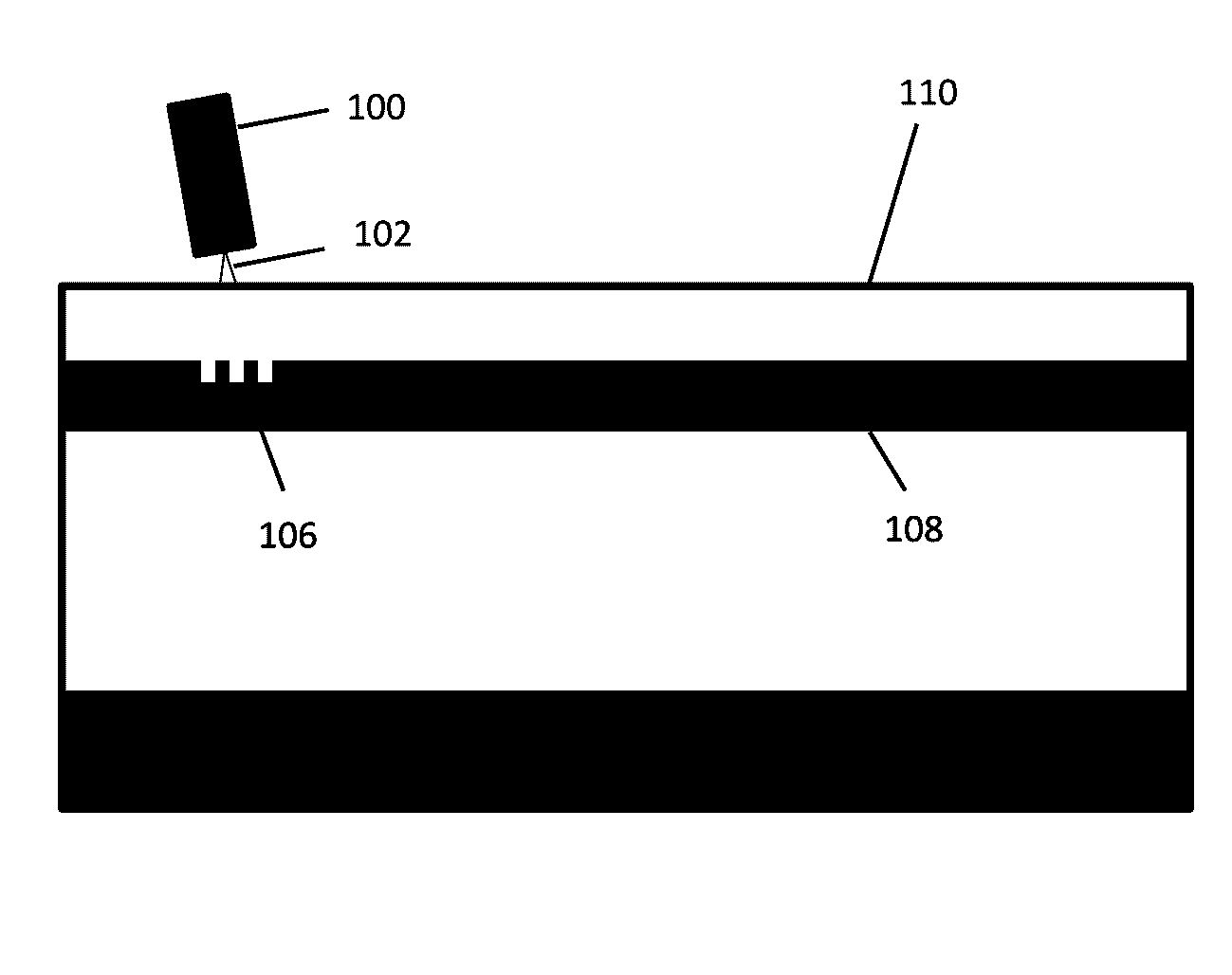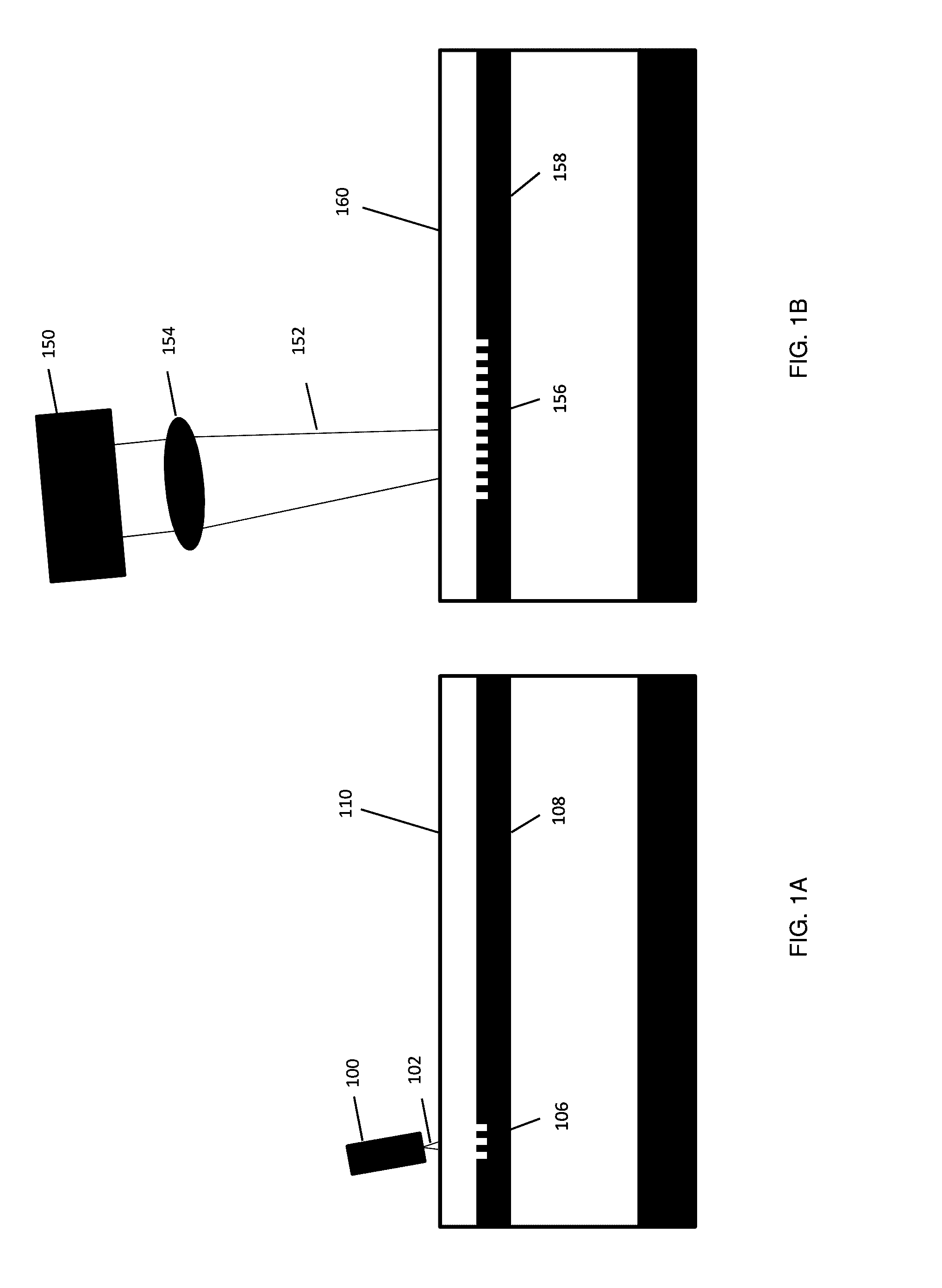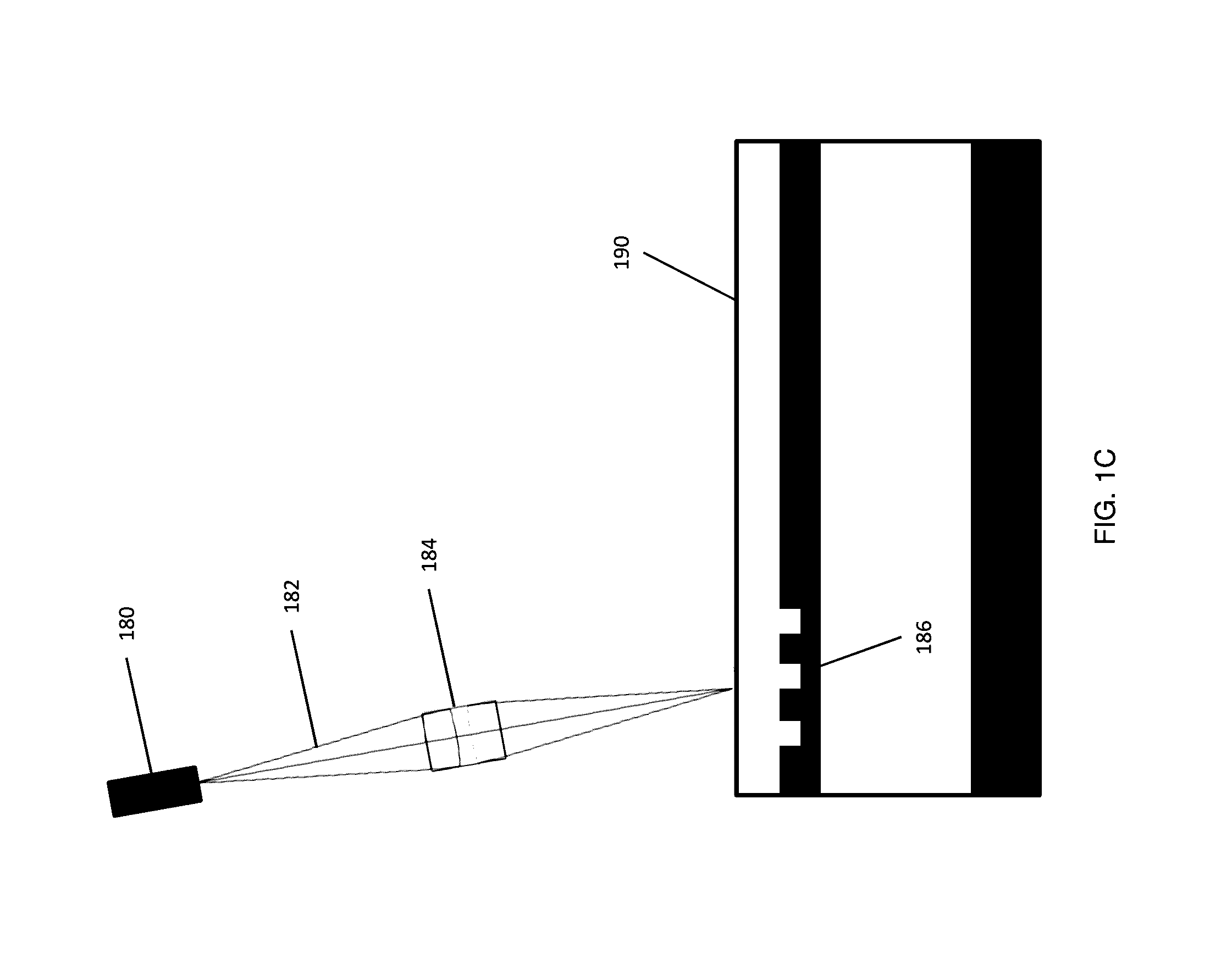Integrated target waveguide devices and systems for optical coupling
- Summary
- Abstract
- Description
- Claims
- Application Information
AI Technical Summary
Benefits of technology
Problems solved by technology
Method used
Image
Examples
example 1
Binary Grating Couplers with Low Numerical Aperture
[0205]This example describes the design, optimization, and modeling of various binary grating couplers having low NA. The coupling of optical energy through free space to a 2-dimensional grating coupler can be modeled using finite-difference time-domain (FDTD) numerical analysis of the Maxwell equations, for example using computer software from Lumerical (www.lumerical.com) or the like. An example of such modeling is shown in FIG. 17A, where the 2-dimensional Gaussian light source (1702) is shown in light shading above the device model. The arrow shown within the light source represents a coupling angle of 10 degrees. The arrow is shown intersecting a rectangular box that represents the grating coupler structure (1704). The oxide cladding (1706) is the solid layer surrounding the coupler. The waveguide core (1708) is represented as a thin line extending to the left from the coupler. Optical energy is coupled from above the structure...
example 2
Estimation of Coupling Efficiencies into Model Target Waveguide Device
[0212]This example provides estimated coupling efficiencies for a waveguide device with an Si3N4 core with dimensions roughly 0.600×0.050 μm, surrounded by SiO2 cladding, and supporting a single TM0 mode.
Coupling efficiency:
ηtargetdevice=PoweringuidedmodeTotalpowerindevice
Waveguide effective index:
ne=βk=1.9
λ=532 nm, k=1.18×10−9 cm−1
β=1.87×105 cm−1
κ=coupling coefficient (mode overlap integral)
Maximum condition: ηL=π / 2
Requirement for minimum radius of curvature: 0.9 mm
Radiative loss per bend: 0.5 dB
[0213]A not-to-scale representation of the exemplary waveguide cross-section is shown in FIG. 23A. Estimates of coupling efficiency are based on a calculation of the overlap integral between the desired mode profile and the excitation field. An analytics solution of the fields for this geometry is not known, but the basic mode profile of the TE0 mode of this waveguide can be approximated (Schlosser and Unger, based on a...
example 3
Theoretical Transverse Coupling into Waveguide Device with a Polished Facet
[0214]The overall coupling efficiency of a device with a polished facet is the product of reflectance loss and mode overlap, where reflection loss for free-space coupling is larger than for an incident plane wave: 9.6%. Perfect coupling would require an incident energy distribution that is exactly the inverse of the far-field distribution of light exiting the guide. A more accurate calculation of the reflectance loss, however, would require integration over these angles. The result of integrating over the high NA dimension only is 12.4%. The best-case insertion loss of the device under a straightforward approach is
ηinstrument=0.876
The efficiency could be improved by applying an AR coating. The efficiency could also be improved by including a very small air gap—on the order of the light wavelength—between the target device and the exit facet of the illumination source.
[0215]Efficiencies are determined by the m...
PUM
 Login to View More
Login to View More Abstract
Description
Claims
Application Information
 Login to View More
Login to View More - R&D
- Intellectual Property
- Life Sciences
- Materials
- Tech Scout
- Unparalleled Data Quality
- Higher Quality Content
- 60% Fewer Hallucinations
Browse by: Latest US Patents, China's latest patents, Technical Efficacy Thesaurus, Application Domain, Technology Topic, Popular Technical Reports.
© 2025 PatSnap. All rights reserved.Legal|Privacy policy|Modern Slavery Act Transparency Statement|Sitemap|About US| Contact US: help@patsnap.com



